When we read the Orange County Fire Department’s (OCFD) report about the electrical fire that occurred while a Tesla was charging in Irvine California two things stuck out. First, there was no conclusive cause for the fire in the report. Second, the report did not state if the electrical work done to add the high current outlet had been inspected by the town’s electrical inspector. That is the final check done by the town when an electrical modification or addition is done to a residence according to the City of Irvine’s Code Enforcement staffer we spoke to.
Adding electric car home charging connections is not as simple as adding, say a light fixture. Even chargers for cars like the Nissan Leaf that draw much less power than a Tesla require 40 amp breakers. Tesla has a few options for home charging and all involve much more current than most home appliances can draw. These are not do-it-yourself projects and can cost thousands of dollars.
The City of Irvine, like most municipalities, requires that a homeowner, or the homeowner’s electrician, pull a building permit from town-hall, or via the town’s on-line system whenever electrical additions or modifications are made to a residence. After the permit is issued a licensed electrician will perform the work. After it is finished the town’s electrical inspector will visit the jobsite, review the work done on-site, and then “sign-off” on the building permit. This is a big benefit to the homeowner because the job is now inspected by a second electrician who is impartial. If the electrical inspector has any changes he feels should be made the inspector does not sign the permit until the electrician corrects the work to his satisfaction.
Torque News wondered if the addition of the electrical wiring and outlet the Model S was connected to had been done to code and if a permit had been pulled and signed off. The reason we feel this matters is the fire department’s report did not pin the blame on the car, the charging cable, the wall connector, or the home’s wiring. Something did cause a fire while a Model S was charging. It seems logical to look first and see if the proper building codes and procedures were followed when the wiring was installed. We can say for now that the procedures were not according to those we spoke with. This does not mean the electrician made any wiring mistakes, but the job was not inspected as is required.
In the OCFA post-fire report the homeowner is quoted as saying “…she bought the vehicle in August and had a licensed electrician install the 100amp breaker in her panel and the wall socket for her Tesla charging system.” (see page 5 of the report)
Tesla has vehemently denied that their Model S and its accessories had anything to do with the fire. Yet, since the fire Tesla has made software modifications to the car to reduce the chances of charging trouble and last week decided to send all Model S owners a new part with a thermal circuit breaker inside (a fuse). Two changes within a span of weeks to a system that the company feels had nothing to do with causing a fire. Tesla owners who replied to our published stories tell us this is the second redesign of the charger components to prevent melting and similar issues. Tesla was also very hard on Reuters, whose story on the fire seems to be factual, but which did go about as far as possible to infer the Tesla was to blame.
Despite the fact that Tesla is now making changes to improve the safety of the Model S’ charging system 17 months after it began selling the car, the fact that the location of the fire was not inspected does seem to bolster Tesla’s statements that it had no fault in the fire.
Research Notes:
To determine if a permit had been obtained and an inspection done as a result, we first contacted the Orange County Fire Authority (OCFA). We explained that we had read the report of the fire that the OCFA had investigated and wanted to know if a permit for the electrical work had been pulled. Kelley Zimmerman, Battalion Chief, Corporate Communications at OCFA replied to our inquiries but didn’t know the answer. He directed us to the City of Irvine.
We next contacted the City of Irvine and we received a reply from Annie Brown, the Senior Media Services Coordinator. She told us that the electrical permits for the address where the fire occurred were the responsibility of the Irvine Campus Housing Authority (ICHA). She referred us to Ron Reid. We contacted Mr. Reid, but his out-of-office reply redirected us to Andrew Herndon. We then tried Mr. Herndon. There was no reply for a couple of weeks. It turns out Mr. Herndon was ill but did return our e-mail request for information with phone calls and he was generous with his time. He informed us that ICHA is sort of a home-owners’ association and indeed the City of Irvine Code Enforcement was the place we needed to get our answer. By this time we had learned the City of Irvine’s on-line permit information system well enough to find that there had only been one building permit recorded for the address of the fire and it was many years old and not an electrical permit for a garage.
Not trusting our own search skills, we spoke first to Leslie at the City of Irvine who confirmed our search was accurate. She also suggested if we had any questions that we try the Code Enforcement Help Desk. We did so and spoke to Thea, who confirmed the older permit and also confirmed that in her opinion a permit and final inspection would be required for the addition of an outlet in a garage, particularly one that was to handle 50 amp circuit breakers.
We obtained the address (22 Perkins Court) and the fire report from this source and have seen it in other locations as well . We also included the address in all of the communications with those officials listed above. We have no reason to believe it is incorrect.
Photo of Tesla High Power Charger courtesy of the Tesla public site. Fire was reportedly in a garage where a Universal Mobil Charger was being used.



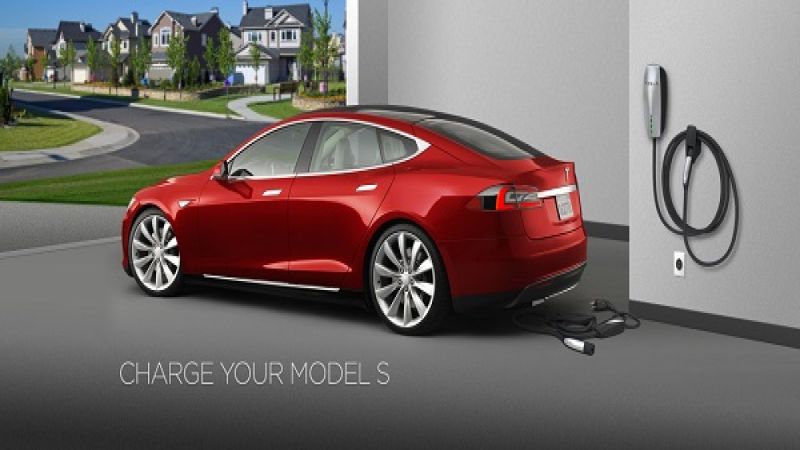





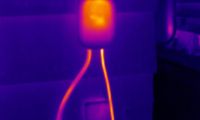
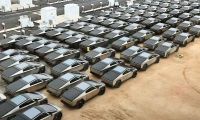
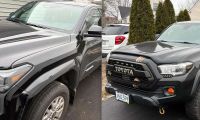
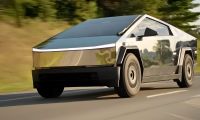
Comments
Shortly after this story was
Permalink
Shortly after this story was published NHTSA announced a recall of the Model S over this issue. Story can be found here: http://www.torquenews.com/1083/2013-tesla-model-s-recalled-fire-risk-nhtsa